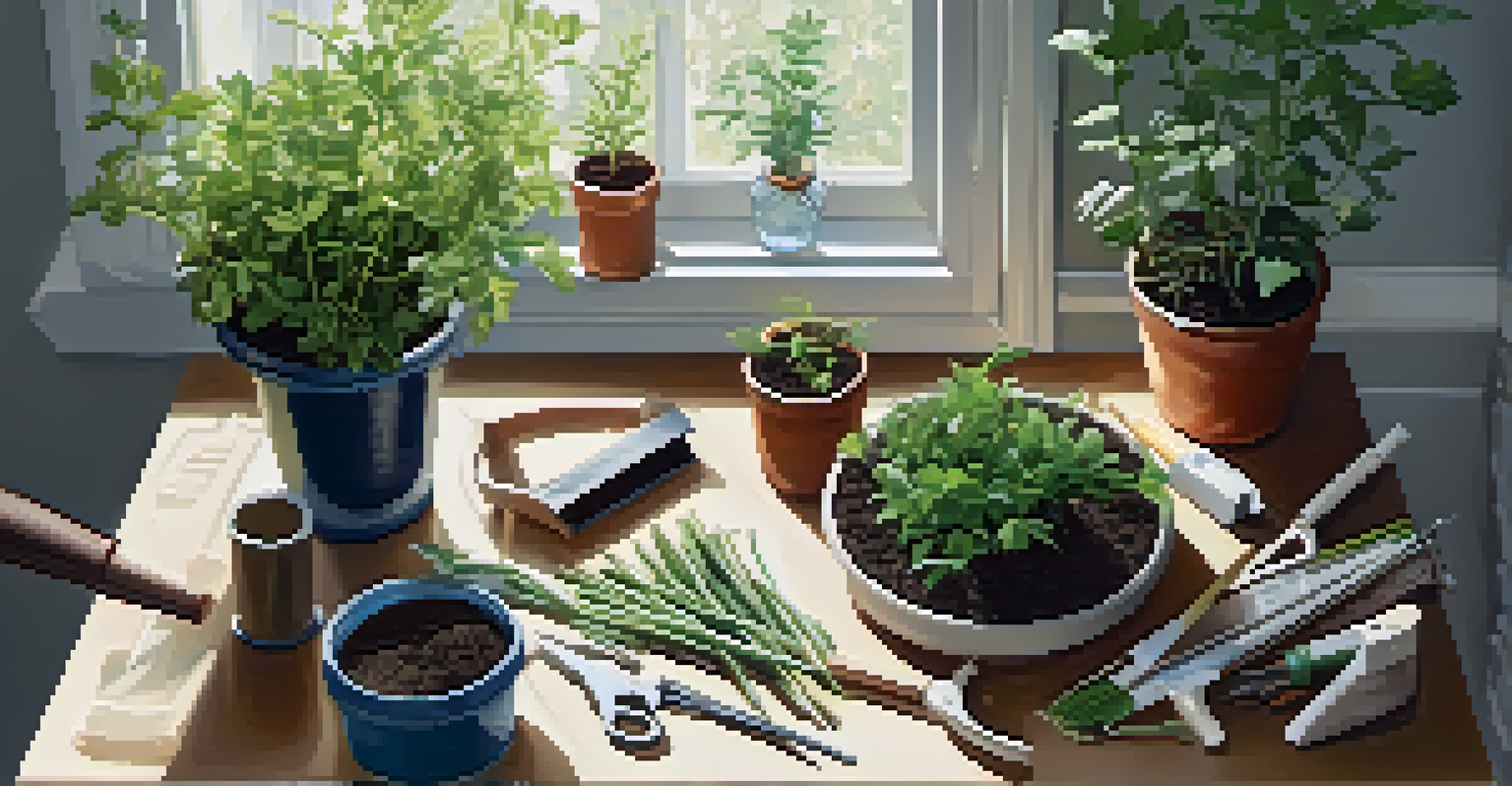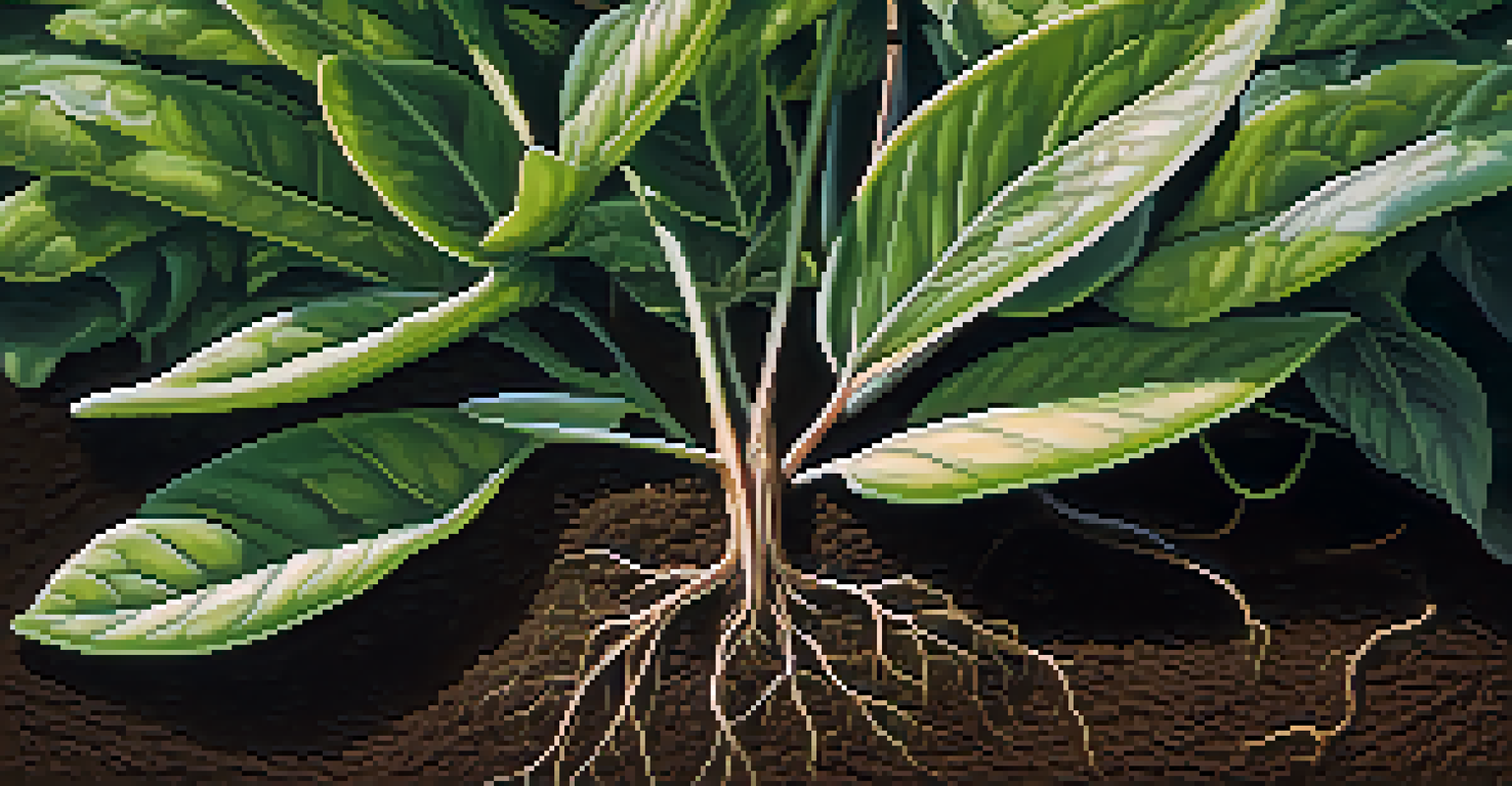Vegetative Propagation: Understanding Its Benefits

What is Vegetative Propagation and How Does It Work?
Vegetative propagation is a method of plant reproduction that involves creating new plants from existing ones. This process can occur naturally or be facilitated by gardeners and horticulturists. Common techniques include cutting, layering, and division, all of which allow the parent plant to produce offspring without the need for seeds.
Plants are not just products; they are living organisms that deserve our respect and care.
In simpler terms, think of vegetative propagation like cloning plants. When you take a cutting from a healthy plant and nurture it, you’re essentially creating a genetic copy of that plant. This method is not only efficient but also ensures that the new plants will share the same desirable traits as the parent.
This approach is particularly beneficial for plants that don’t produce viable seeds or have long germination periods. By using vegetative propagation, gardeners can quickly reproduce their favorite plants, ensuring a lush garden without the wait.
Key Benefits of Vegetative Propagation for Gardeners
One of the primary benefits of vegetative propagation is speed. Instead of waiting for seeds to germinate and grow, gardeners can produce new plants in a fraction of the time. This rapid growth allows for quicker expansion of gardens and landscapes, making it an ideal technique for those eager to see results.

Another significant advantage is the preservation of desired traits. When plants are propagated vegetatively, they maintain the same characteristics as the parent plant. This is particularly important for hybrid varieties or those with unique features that might not be passed on through seeds.
Quick Plant Reproduction Method
Vegetative propagation allows gardeners to rapidly produce new plants from existing ones without the need for seeds.
Additionally, vegetative propagation can lead to healthier plants. Because new plants are created from healthy, mature stock, they often have a better chance of thriving compared to those grown from seeds, which can be more susceptible to diseases and environmental stress.
Common Techniques in Vegetative Propagation
There are several popular techniques for vegetative propagation, each suited for different types of plants. One common method is taking cuttings, where a section of the stem, leaf, or root is severed and placed in soil or water to develop roots. This technique works well for many houseplants and shrubs.
The best time to plant a tree was 20 years ago. The second best time is now.
Another effective method is layering, which involves bending a branch to the ground and covering it with soil while still attached to the parent plant. Over time, roots develop at the buried section, allowing a new plant to be separated once it’s strong enough.
Division is another straightforward technique, especially for perennials. By carefully separating a plant into smaller sections, each with roots and foliage, gardeners can create multiple new plants from a single specimen, promoting a fuller garden.
How to Get Started with Vegetative Propagation
Getting started with vegetative propagation is easier than you might think. First, choose a healthy parent plant that has the desired traits you want to replicate. Make sure to gather the necessary tools, such as clean shears or knives, pots, and a suitable growing medium.
Once you have your materials, decide on the propagation technique that best suits your plant type. For instance, if you’re working with a succulent, cuttings may be the best option, while for a vine, layering might be more appropriate.
Preservation of Plant Traits
This technique ensures that new plants retain the desirable characteristics of the parent, making it ideal for hybrids and unique varieties.
After preparing your cuttings or sections, provide them with the right environment to thrive. This may include keeping them in a warm, humid area with indirect light until they develop roots. Patience is key, as it may take some time before you see new growth.
Challenges to Consider in Vegetative Propagation
While vegetative propagation is a fantastic technique, it’s not without its challenges. One common issue is the potential for disease transmission. If the parent plant is infected, the new plants will likely suffer the same fate, so it’s crucial to start with healthy stock.
Another challenge can be the development of roots. Some plants are more finicky than others when it comes to rooting from cuttings, and it may require a bit of trial and error to find the right method that works for your specific plant.
Lastly, environmental factors such as temperature and humidity can impact the success of vegetative propagation. Understanding the specific needs of the plants you’re working with is essential for optimizing growth and ensuring a robust new generation.
Environmental Impact of Vegetative Propagation
Vegetative propagation is not only beneficial for gardeners but also has positive implications for the environment. By promoting plant reproduction without relying on seeds, this method can help conserve plant species that may be endangered or threatened due to habitat loss.
Furthermore, it can enhance biodiversity in local ecosystems. By encouraging the growth of various plant species through propagation, gardeners can create habitats that support diverse wildlife, from pollinators to small mammals.
Benefits for the Environment
Vegetative propagation supports biodiversity and helps conserve endangered plant species while promoting sustainable gardening practices.
Additionally, using vegetative propagation can reduce reliance on commercial plant nurseries, which often contribute to environmental degradation through unsustainable practices. By propagating plants at home, gardeners can play a vital role in fostering a more sustainable relationship with nature.
The Future of Vegetative Propagation in Gardening
As gardening continues to evolve, vegetative propagation is expected to gain even more popularity among both amateur and professional gardeners. With an increasing focus on sustainability and self-sufficiency, many are turning to this method as a way to cultivate plants responsibly.
Moreover, advancements in technology are making it easier than ever to propagate plants. New methods, such as tissue culture, allow for the rapid multiplication of plants in a controlled environment, further enhancing the potential of vegetative propagation.

Ultimately, the future looks bright for vegetative propagation. As more people connect with nature and seek to grow their own food or beautify their spaces, this technique will likely remain a valuable tool in the gardener's toolkit.